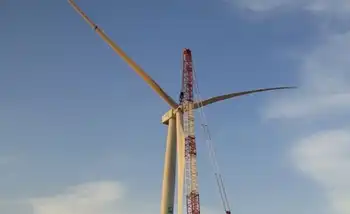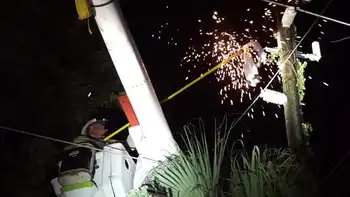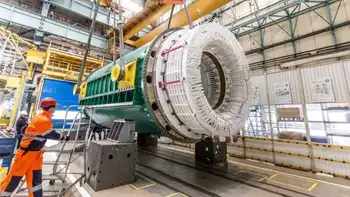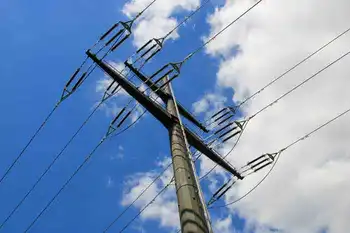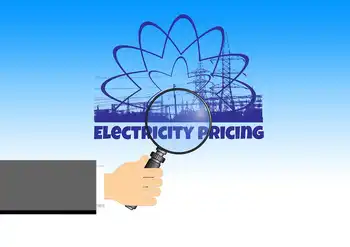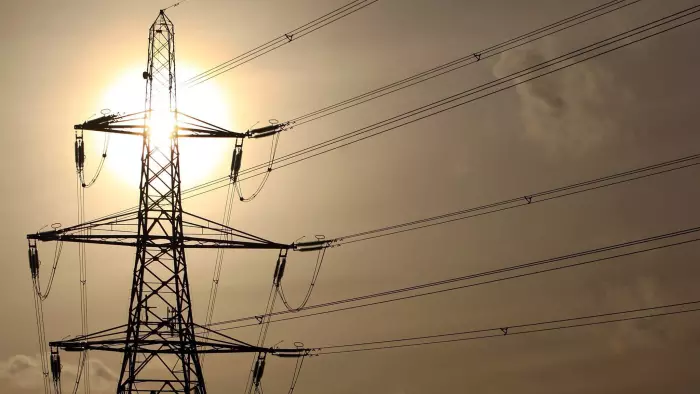Investors see bright future in wind energy
By Associated Press
NFPA 70e Training
Our customized live online or in‑person group training can be delivered to your staff at your location.

- Live Online
- 6 hours Instructor-led
- Group Training Available
Revenue from solar, wind power, ethanol and biodiesel fuel grew 50 percent to about $116 billion last year, according to Clean Edge Inc., a research and publishing firm. The spike in green revenue, and the backing of the federal government to explore these energy sources has excited investors.
"They favor green investment right now because they think that's the way the world is going," said David Wood, director of the Institute for Responsible Investment at Boston College's Center for Corporate Citizenship.
The federal stimulus package includes $17 billion for the current fiscal year to upgrade and expand the antiquated national power grid. It also allocates $11 billion to develop a smart grid — an electronically controlled distribution system that will be much more efficient.
All told, last year global investments in energy technologies expanded by 4.7 percent to $155 billion, according to research and consulting company New Energy Finance Ltd.
"The smartest investors put their own personal prejudices aside," said Jeff Siegel, managing editor of Green Chip Stocks, an investment advisory service. "Many people think global warming is propaganda, but they're aware that the bottom line is climate change legislation is going to happen. Investors smart enough to realize this know there's an opportunity there."
Investors looking to put their cash into an area that's seen tremendous growth might look to wind energy, said Ron Pernick, a spokesman for Clean Edge Inc. Wind has jumped ahead of other green energy sources because innovations in turbine technology (think: windmills) have improved the efficiency and made systems the most cost effective alternative. Turbines can generate electricity with wind speeds starting at 8 to 16 miles per hour according to the U.S. Department of Energy.
Turbines are typically built in groups on wind farms where the wind is the strongest. The largest U.S. wind farm is near Abilene, Texas, with 421 turbines scattered across 47,000 acres.
"Of all renewable energy sectors, this is the one reaching the largest scale right now," Pernick said.
Another reason wind surged to the forefront is because many states passed standards that require that a percentage of the state's electricity to be made from renewable energy sources.
California, Iowa, Oregon and Texas are among those with such goals. That pushes utility companies such as AES Corp, Alliant Energy and MidAmerican Energy to invest in wind farm ownership or at least buy a portion of their energy from wind providers to meet the minimum green energy requirements.
Because it's an emerging technology, investors may choose to get involved by owning a piece of larger conglomerates such as General Electric Co. Its energy division lead the industry in newly installed turbines in the U.S. last year. It provided roughly 48 percent of the more than 5,000 turbines installed according to the American Wind Energy Association. This added an additional 3,657 megawatts.
In its 2008 annual report, GE said its energy division brought in 21 percent of revenue for the year. That includes technologies developed to harness wind, oil, gas and water.
The division has seen a 53 percent increase in revenue over the past three years and a 73 percent increase in profit due to worldwide demand for energy and alternative sources of power.
GE shares are trading in the $12 range, well off their 52-week high of $34.
Trinity Structural Towers, the Iowa company President Obama visited, is a division of Dallas-based Trinity Industries Inc. (TRN), a diversified company with railroad car, highway construction materials and wind turbine tower divisions.
Shares of the company have gained nearly 18 percent since Obama's visit. They were trading 12 percent higher, near $15 a share and have traded between $6 and $41 over the last year.
But significant growth in wind turbine installations was propelled forward by many European manufacturers. They've set up factories and distribution centers in the United States to meet demand for turbines, blades, and other large components that are too expensive to import.
Many are traded in the United States including Vestas Wind Systems (VWSYF), which was second only to GE in terms of the wind power it supplied last year — some 1,120 megawatts.
Siemens AG (SI), the German industrial conglomerate, with 791 megawatts, was third in terms of installed capacity.
Other leaders investors may look to are Spain's Gamesa Corp. and Britain's Clipper Windpower, both considered pure play companies because they focus just on wind energy production.
Because many wind energy companies are foreign-based there are always geopolitical and currency risks to weigh. Investors also will want to be wary of emerging companies with unproven ideas. At a minimum, you'll want to be sure that the company is well capitalized and has a strong business model.
When investing in a fund, such as an exchange traded fund, Siegel of Green Chip Stocks recommends making sure it is balanced. Some funds are very sector specific, focusing on solar stocks, for example. If something were to happen to impact that industry such as a shortage of the electronic components that convert sunlight to electricity, your entire fund could crash. There are funds such as Market Vectors Global Alternative Energy ETF Trust (GEX), which includes wind, solar, geothermal and other business types.
As you look for investment opportunities, be aware that the global economic slump began hitting the renewable energy sector hard late last year and it's continued into the first quarter.
Global new investment in clean energy fell 53 percent to $13 billion in the first quarter of this year compared with the same period a year ago. That's mostly due to inadequate bank financing, a result of the credit crunch and low stock market confidence from the continuing recession.
In the United States, financing of new projects fell by $500 million, down from $5 billion in the first quarter of 2008. Analysts at New Energy Finance said the dramatic fall illustrates how badly government stimulus money needs to begin flowing to businesses.
So, whether you're interested in investing directly into a green energy company, or seeking out a mutual fund, you have many choices to consider if you've been thinking of a greener investment strategy.





